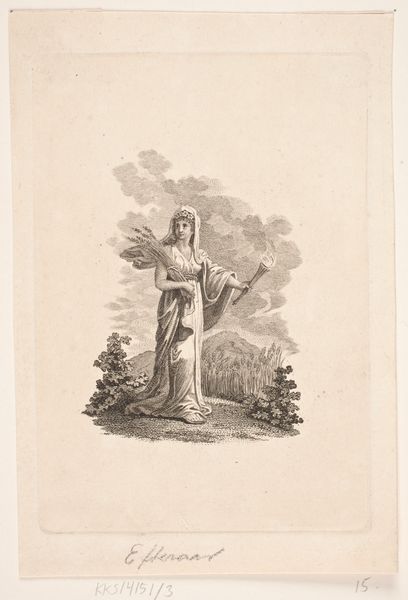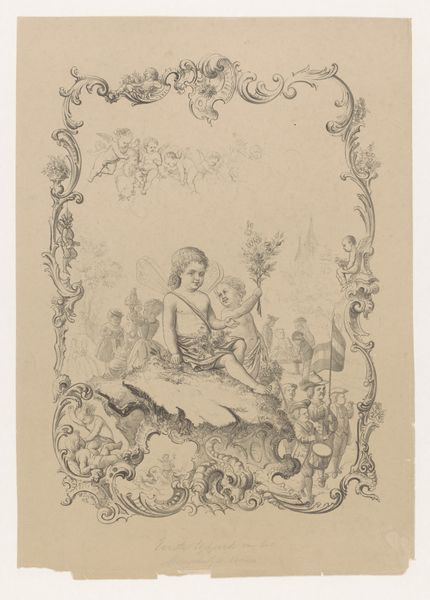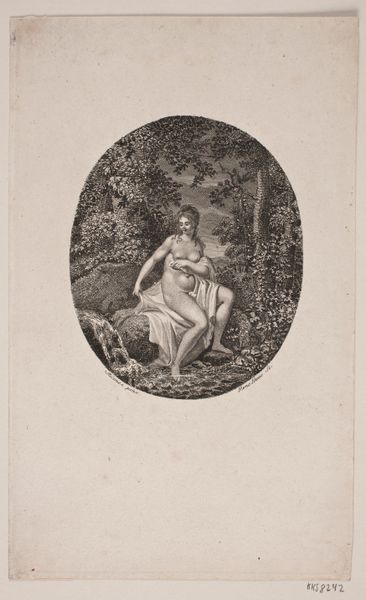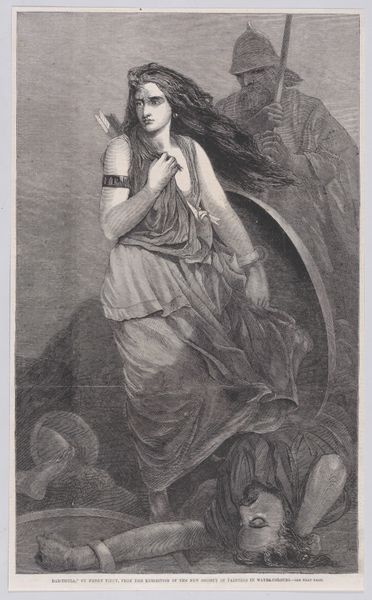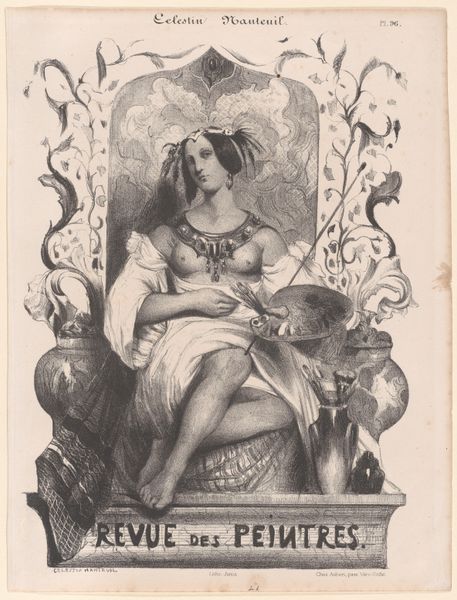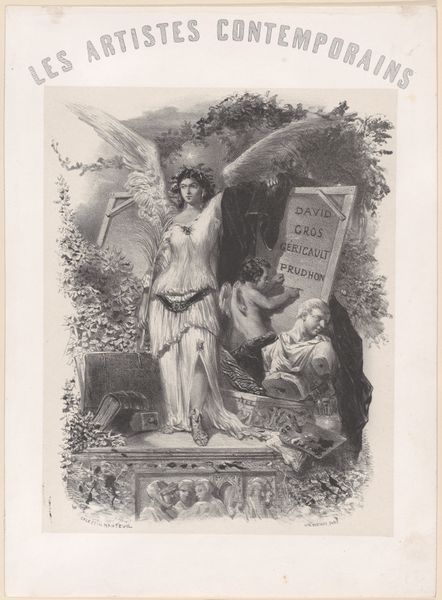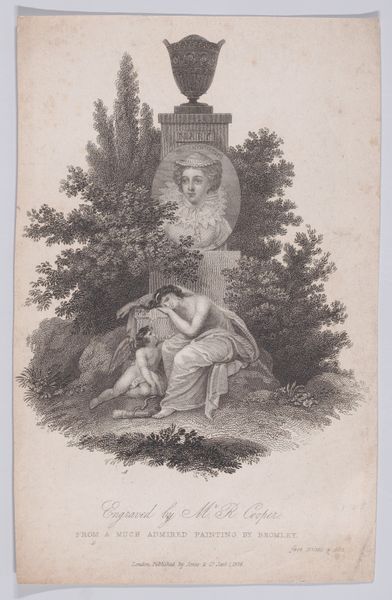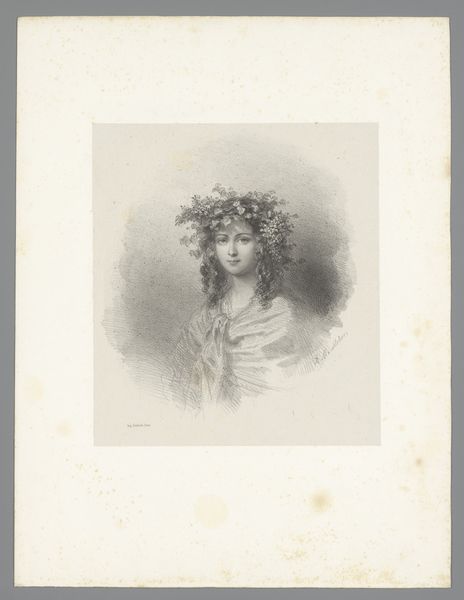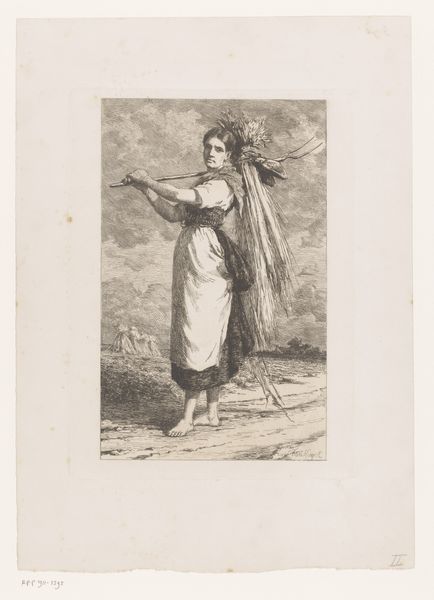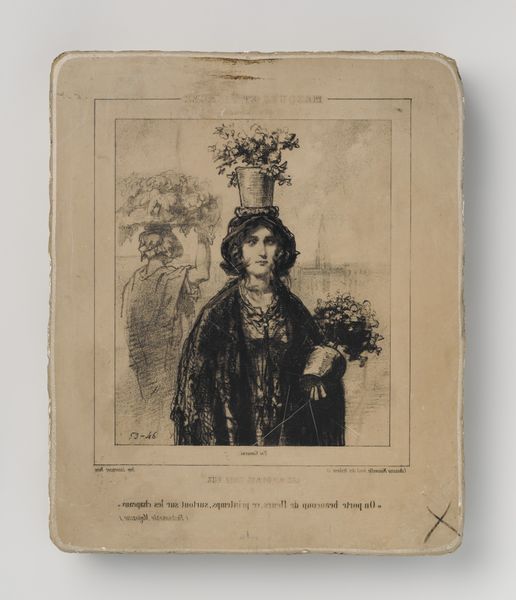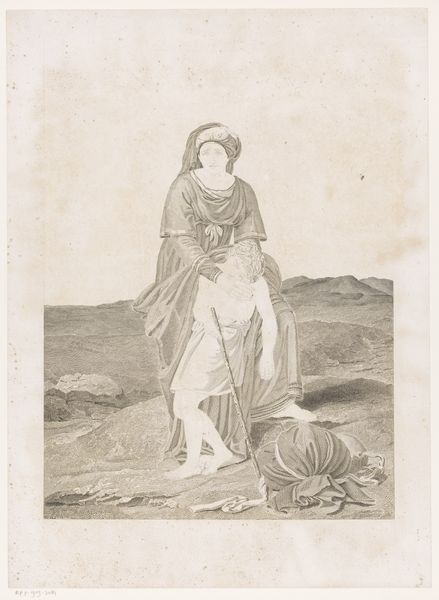
Miss Lizzie Weston as Oberon: "And Maidens call it, love in idleness. Fetch me that flower" (Midsummer Night's Dream, Act 2, Scene 2) 1855
0:00
0:00
Dimensions: Sheet: 9 13/16 × 7 1/16 in. (25 × 18 cm)
Copyright: Public Domain
Curator: This engraving, created in 1855 by Martin & Johnson, New York, depicts "Miss Lizzie Weston as Oberon," a scene drawn from Shakespeare’s "A Midsummer Night’s Dream." Editor: It’s… interesting. It strikes me as surprisingly staged for an interpretation of such a whimsical play. The heavy use of line in the engraving lends the scene a somewhat somber mood, even with the fairies flitting about in the background. Curator: Indeed. Let’s consider the context. In the mid-19th century, portraying individuals in theatrical roles gained popularity. This engraving, while seemingly romantic, offers insight into performance culture and celebrity. How the figure embodies and performs the character of Oberon. It engages with conversations around gender, performance, and power dynamics within Victorian society. Editor: You're right; understanding it as a document of performance helps. And looking closely, the material aspect is telling: engraving allowed for mass production and distribution. The print becomes a commodity, an accessible image of a theatrical performance linked with ideas of consumer culture. This process democratized access to art and theater, but it also changed our relationship to labor. This image is manufactured to be consumed widely. Curator: The deliberate composition, the symbolic accessories such as the fairy wand, and Oberon's stance invite an exploration of gender representation at this time. Note too the lines taken directly from Act 2, Scene 2 that adorn the print - adding another dimension to how audiences would engage. Editor: Yes, it all circles back to accessibility through mass production – something engravings achieved efficiently. It wasn't about unique artistic expression. This print made high art like Shakespeare accessible, but flattened it into easily reproducible forms for a Victorian audience. Curator: Considering this work reveals a network of meaning involving class, theater, and access to art. Editor: Precisely. I appreciate how looking at the materials and manufacturing methods opens up a different conversation than one simply focusing on Romantic ideals. Curator: A dialogue vital to appreciate this piece! Editor: Exactly, a piece which now seems more layered.
Comments
No comments
Be the first to comment and join the conversation on the ultimate creative platform.
